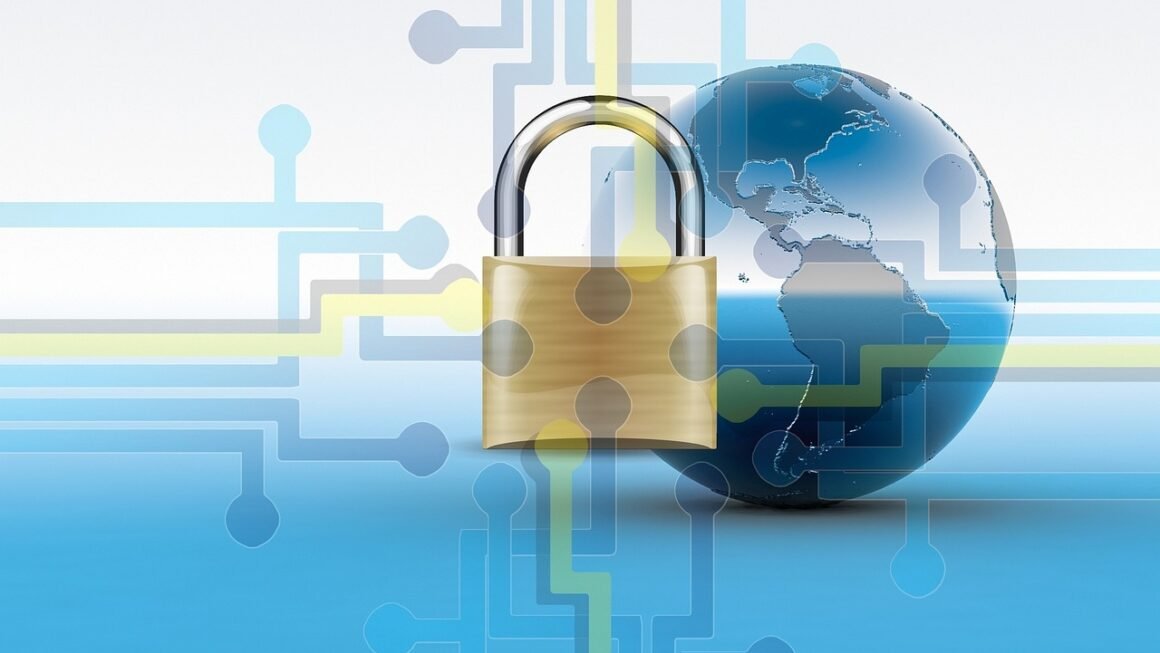Malware. The very word can send shivers down the spines of even seasoned tech professionals. It’s a persistent and evolving threat that targets individuals, businesses, and even entire governments. Understanding what malware is, how it works, and how to protect yourself from it is no longer optional; it’s essential for navigating the digital landscape safely. This comprehensive guide will equip you with the knowledge you need to stay ahead of the curve and minimize your risk.
What is Malware?
Defining Malware and Its Purpose
Malware, short for malicious software, is any program or code that is designed to harm a computer, network, or data. Unlike benign software created to improve user experience, malware’s primary purpose is to infiltrate systems without consent and execute harmful actions. These actions can range from stealing sensitive information and disrupting operations to holding data hostage for ransom.
- Key characteristics of malware:
Malicious intent: Designed to cause harm.
Unauthorized access: Gains access to systems without explicit permission.
Potential for damage: Capable of causing damage to data, hardware, and software.
- Examples of common malware actions:
Data theft: Stealing passwords, financial information, or personal data.
System corruption: Damaging or deleting files, rendering systems unusable.
Denial-of-service (DoS) attacks: Overloading systems to prevent legitimate users from accessing them.
Ransom demands: Encrypting data and demanding payment for its release.
Different Types of Malware
The malware landscape is diverse, with various types targeting different vulnerabilities and employing different attack vectors. Understanding these different types is crucial for effective protection.
- Viruses: Require a host file to spread. They attach themselves to executable files and replicate when the infected file is run. A common example is a virus hidden within a seemingly harmless game download, which then infects other executable files on your computer.
- Worms: Self-replicating malware that doesn’t require a host file. They can spread rapidly across networks by exploiting security vulnerabilities. The infamous “I Love You” worm spread through email and quickly brought down networks worldwide.
- Trojans: Disguise themselves as legitimate software to trick users into installing them. They often arrive as attachments in spam emails or are bundled with pirated software. A fake Adobe Flash Player installer that secretly installs a keylogger is a common example of a Trojan.
- Ransomware: Encrypts a victim’s files and demands a ransom payment for the decryption key. LockBit, a notorious ransomware group, has caused significant disruptions and financial losses to organizations globally.
- Spyware: Secretly monitors user activity and collects sensitive information, such as browsing history, login credentials, and financial data. Spyware often comes bundled with free software downloads and can be difficult to detect.
- Adware: Displays unwanted advertisements on a user’s computer. While not always malicious, adware can be intrusive and annoying, and it can sometimes be bundled with more harmful malware.
- Rootkits: Designed to hide malicious activity on a system, making it difficult to detect and remove other types of malware. Rootkits can give attackers persistent access to a compromised system.
How Malware Spreads
Common Infection Vectors
Malware doesn’t materialize out of thin air. It relies on various infection vectors to infiltrate systems. Understanding these vectors allows you to take proactive steps to minimize your risk.
- Email Attachments: Malicious attachments in spam emails are a common delivery method. Phishing emails often impersonate legitimate organizations to trick users into opening infected attachments. Always verify the sender and content before opening any attachments.
- Malicious Websites: Visiting compromised or fake websites can result in drive-by downloads, where malware is automatically downloaded and installed without the user’s knowledge. Look for the padlock icon in the address bar (HTTPS) to ensure a website is secure.
- Software Vulnerabilities: Unpatched software vulnerabilities provide attackers with entry points to exploit systems. Regularly update your operating system, applications, and plugins to patch security holes.
- Removable Media: Infected USB drives or other removable media can spread malware to multiple systems. Scan any removable media with an antivirus program before opening files.
- Social Engineering: Manipulating users into revealing sensitive information or performing actions that compromise their security. Be wary of suspicious emails, phone calls, or social media messages.
The Role of Social Engineering
Social engineering plays a significant role in malware propagation. Attackers often rely on psychological manipulation to trick users into bypassing security measures and installing malware.
- Phishing: Crafting deceptive emails, websites, or messages that impersonate legitimate entities to steal credentials or install malware. A phishing email pretending to be from your bank might ask you to click a link to verify your account details.
- Pretexting: Creating a false scenario or story to gain access to sensitive information. An attacker might call a company pretending to be an IT support technician needing access to a user’s account.
- Baiting: Offering something enticing, such as a free download or a valuable service, to lure victims into clicking on malicious links or downloading infected files. A fake software crack or a “free” streaming service are common examples.
- Actionable Takeaway: Train yourself and your employees to recognize social engineering tactics and to be suspicious of unsolicited requests for information or actions.
How to Protect Yourself from Malware
Essential Security Practices
Protecting yourself from malware requires a multi-layered approach that combines technological solutions with good security habits.
- Install and Maintain Antivirus Software: A robust antivirus program is your first line of defense against malware. Ensure your antivirus software is always up-to-date with the latest virus definitions. Consider using a reputable antivirus solution like Norton, McAfee, or Bitdefender.
- Keep Software Updated: Regularly update your operating system, applications, and plugins to patch security vulnerabilities. Enable automatic updates whenever possible. Software updates often include critical security fixes that address newly discovered vulnerabilities.
- Use a Firewall: A firewall acts as a barrier between your computer and the internet, blocking unauthorized access. Ensure your firewall is enabled and configured correctly. Windows and macOS both have built-in firewalls.
- Be Careful with Email Attachments and Links: Avoid opening attachments or clicking on links from unknown or suspicious senders. Verify the sender’s identity before interacting with any email content. Hover over links to see the actual URL before clicking.
- Practice Safe Browsing Habits: Avoid visiting suspicious websites and downloading software from untrusted sources. Look for the padlock icon in the address bar (HTTPS) to ensure a website is secure. Use a browser with built-in security features like Google Chrome or Firefox.
- Use Strong Passwords: Use strong, unique passwords for all your online accounts. Avoid using easily guessable passwords like “password” or “123456.” Consider using a password manager to generate and store strong passwords.
- Enable Multi-Factor Authentication (MFA): MFA adds an extra layer of security to your accounts by requiring a second form of verification, such as a code sent to your phone. Enable MFA whenever possible.
- Regularly Back Up Your Data: Back up your important data to an external hard drive or cloud storage service. In the event of a malware infection, you can restore your data from the backup. Implement a 3-2-1 backup strategy: 3 copies of your data, on 2 different media, with 1 copy offsite.
Choosing the Right Security Software
Selecting the appropriate security software is critical for comprehensive malware protection.
- Antivirus Software: Consider features like real-time scanning, heuristic analysis, and behavioral monitoring. Look for independent testing results to evaluate the effectiveness of different antivirus products.
- Firewall Software: Choose a firewall that offers advanced features like intrusion detection and prevention. Consider a hardware firewall for enhanced network security.
- Anti-Malware Tools: Complement your antivirus software with specialized anti-malware tools that can detect and remove specific types of malware. Malwarebytes is a popular choice for detecting and removing malware that antivirus software may miss.
- Endpoint Detection and Response (EDR) Solutions: For businesses, EDR solutions provide advanced threat detection and response capabilities, including real-time monitoring, threat analysis, and incident response automation.
What to Do If You Suspect a Malware Infection
Identifying Symptoms of a Malware Infection
Recognizing the signs of a malware infection is crucial for prompt action and minimizing potential damage.
- Slow Computer Performance: Malware can consume system resources, causing your computer to run slower than usual.
- Frequent Crashes or Freezes: Malware can cause system instability, leading to frequent crashes or freezes.
- Unusual Error Messages: Malware can trigger unusual error messages or pop-up windows.
- Unexpected Programs or Files: Malware can install unwanted programs or create unexpected files on your system.
- Increased Network Activity: Malware can generate unusual network activity, such as sending spam emails or connecting to suspicious servers.
- Changes to Browser Settings: Malware can alter your browser settings, such as changing your homepage or installing unwanted toolbars.
- Disabled Security Software: Malware may attempt to disable your antivirus software or firewall.
Steps to Take After a Suspected Infection
If you suspect your computer is infected with malware, take the following steps immediately:
Malware in the Business Environment
Unique Challenges for Businesses
Businesses face unique challenges when it comes to malware protection due to the complexity of their IT infrastructure and the potential for large-scale data breaches.
- Increased Attack Surface: Businesses have a larger attack surface than individuals, with more devices, users, and entry points for attackers to exploit.
- Data Breach Risks: A successful malware attack can lead to a significant data breach, resulting in financial losses, reputational damage, and legal liabilities.
- Downtime and Productivity Loss: Malware infections can disrupt business operations, leading to downtime and productivity loss.
- Compliance Requirements: Many industries are subject to compliance regulations that require businesses to implement security measures to protect sensitive data.
Best Practices for Business Malware Protection
Implementing robust security measures is crucial for protecting businesses from malware threats.
- Employee Training: Educate employees about malware threats and how to avoid them. Conduct regular security awareness training sessions.
- Implement a Strong Password Policy: Enforce a strong password policy that requires employees to use complex passwords and change them regularly.
- Use Multi-Factor Authentication (MFA): Enable MFA for all critical accounts, such as email, VPN, and cloud storage.
- Patch Management: Implement a patch management system to ensure that all software is up-to-date with the latest security patches. Use tools to automate the patch management process.
- Network Segmentation: Segment your network to isolate critical systems and data from the rest of the network. This can limit the impact of a malware infection.
- Intrusion Detection and Prevention Systems (IDS/IPS): Deploy IDS/IPS systems to monitor network traffic for malicious activity and block suspicious connections.
- Data Loss Prevention (DLP) Solutions: Implement DLP solutions to prevent sensitive data from leaving the organization.
- Incident Response Plan: Develop an incident response plan that outlines the steps to take in the event of a malware infection or data breach. Regularly test and update the plan.
Conclusion
Malware is a constant and evolving threat that requires vigilance and a proactive approach to security. By understanding the different types of malware, how they spread, and how to protect yourself, you can significantly reduce your risk of infection. Whether you’re an individual user or a business owner, implementing the security practices outlined in this guide is essential for staying safe in the digital world. Stay informed, stay vigilant, and stay protected. The digital landscape is constantly changing, so continuous learning and adaptation are critical to maintaining a strong security posture against the ever-present threat of malware.



